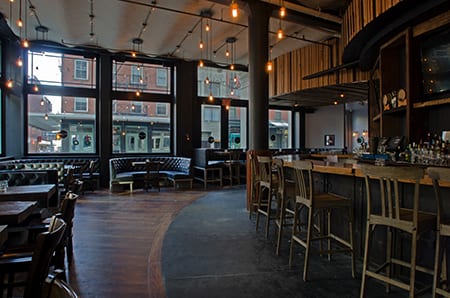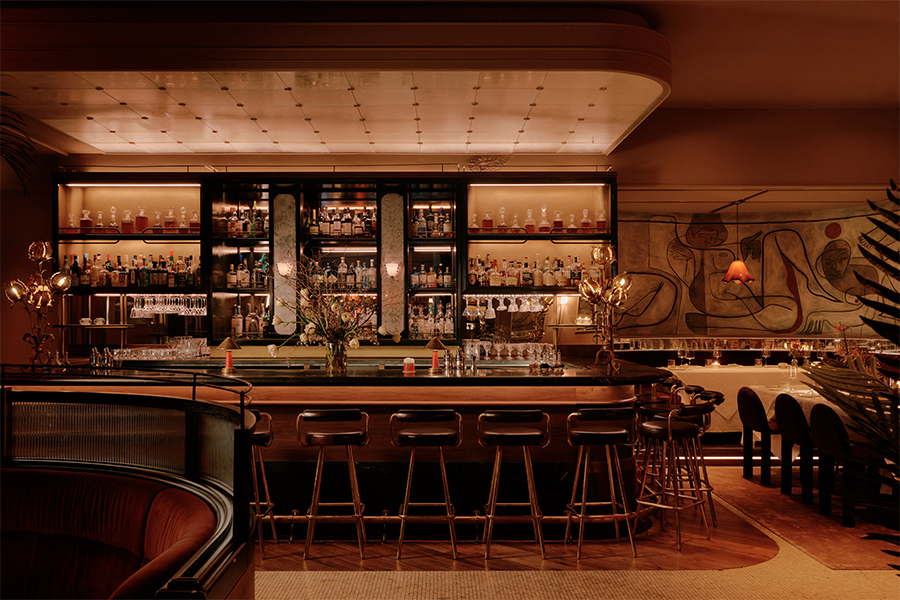Dylan Prime, a steakhouse and cocktail lounge, adds to the rebirth of New York’s Tribeca neighborhood by recalling local history, with a twist. “I really wanted to bring back the bricks and mortar of the building,” says designer Chris Smith of New York–based CMS Architecture and Design. “The challenge was to make the space feel like an authentic, turn-of-the-century design without being cliché.”
The building first served as the main manufacturing facility for the R.E. Dietz Company, which made kerosene lanterns throughout the late-1800s. As part of the team that converted the warehouse, Smith has watched the surrounding area evolve from a rundown neighborhood to having a “new wave of energy,” he explains. To match this vitality, Dylan Prime introduces a layout complete with a raw bar and three private dining rooms.
“Dylan was meant to be a bit more casual,” says Smith. “We wanted to create a little more intimacy with the dining rooms as well.” A mix of leather banquettes and wooden chairs fill the various dining spaces, including a 14-seat room that was previously the elevator shaft. Named the Chef’s Table, this private dining room features a custom-built table beneath a wrought iron orb chandelier and arched copper ceilings.

In the main dining area, stained glass doors also bring back an early-1900s appeal. “They are salvaged industrial windows, which we customized to create sliding panels into the dining room,” explains Smith. “Again it reinforces that traditional Tribeca feel of the ‘butter-and-eggs’ neighborhood.”

Set towards the back of the dining room, the Vault Room derives its name from the building’s original safe, which now acts as a design feature with vintage-inspired cocktail and bar trappings. The carriage arrival and delivery area for the R.E. Dietz Company now houses the Dietz Room-the restaurant’s largest private dining room. Overlooking the dining room through large windows, the space features a television hidden behind a two-way mirror.
This industrial-yet-modern aesthetic continues with herringbone pattern wood floors and the building’s original scalloped ceilings, which are typical of the neighborhood. “We introduced some iconic elements from buildings in the area,” says Smith. As the area is continually under construction, Smith took old floor joists from nearby buildings and used them to accent the space above the bar.

These massive slabs of longleaf yellow pine, which are no longer being produced, are lined vertically in a pattern that, by coincidence, mimics piano keys. “It is heavy, thick lumber, and some pieces are darker,” says Smith. “They just happened to fall into this black keys pattern.” Metal shutters, also taken from neighboring buildings, accent the base of the bar and complement a bartop made of 150-year-old reclaimed wood.

With Dietz lanterns from the era and filament Edison bulbs hanging above, Dylan Prime’s industrial history and aesthetic connects to the menu. “I imagine those Dietz guys sweaty and hungry for a nice steak after work,” says Smith. “In some ways, the design does reflect that.”



